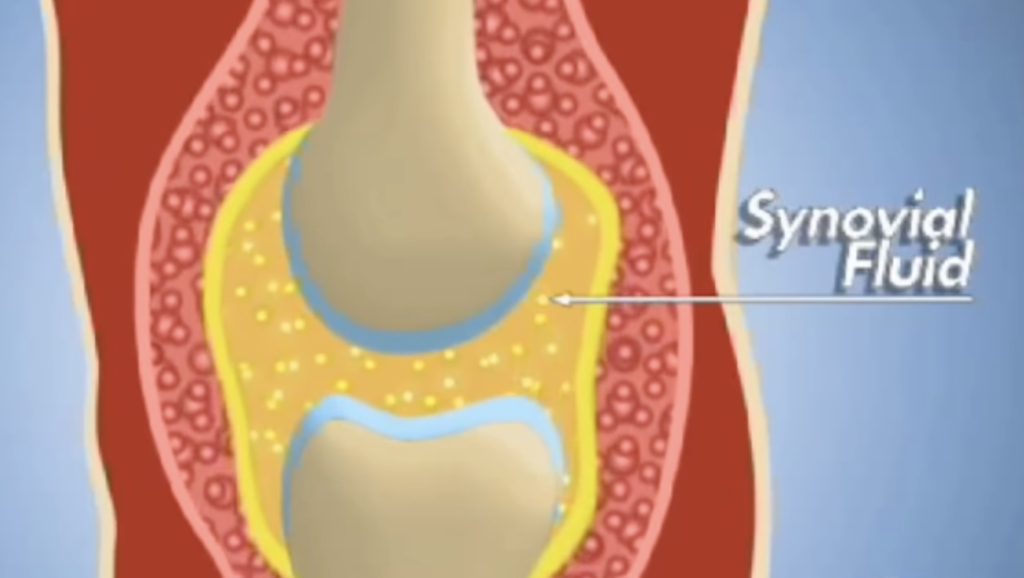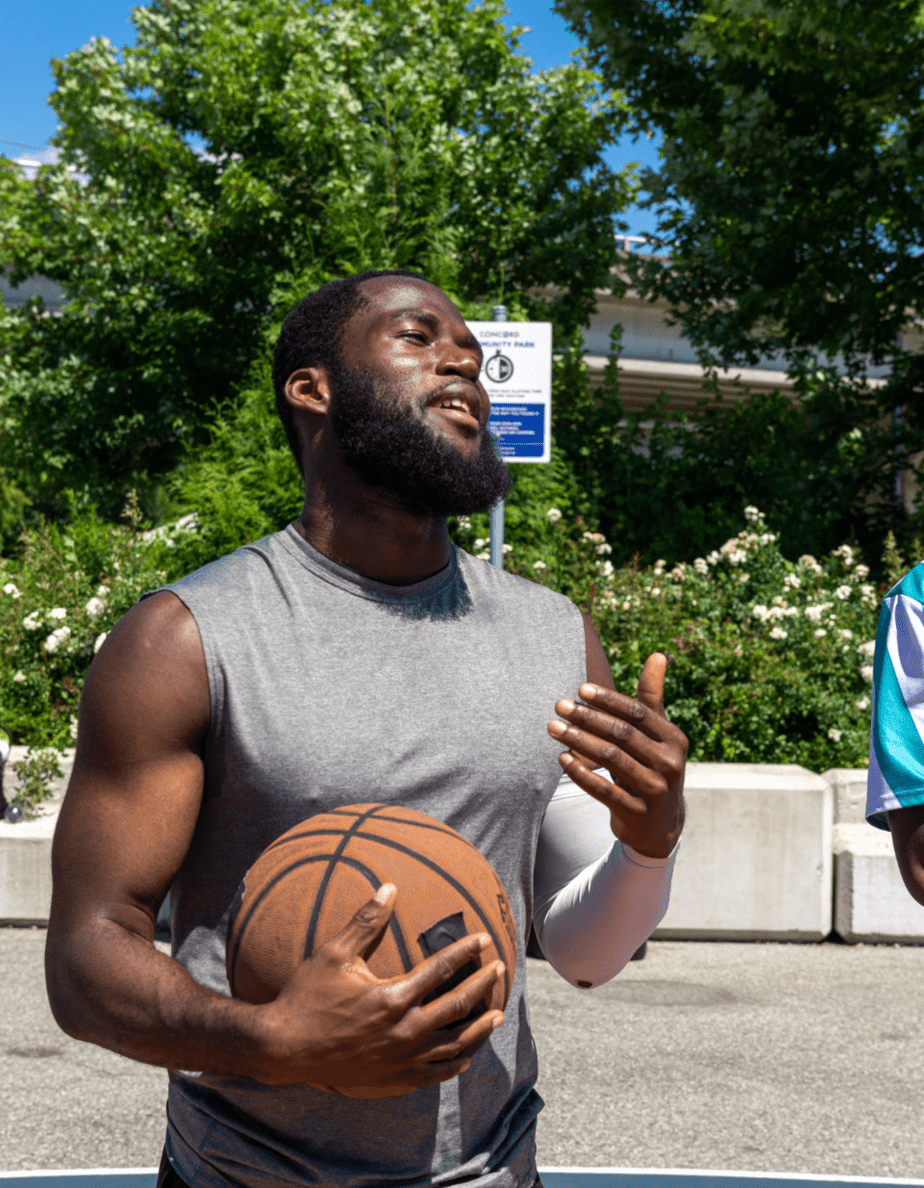Synovial Fluid: Definition and Composition
Have you ever wondered why your knees don’t squeak like an old door hinge? I kept hearing the term synovial fluid. The first time it was in regard to Ben Patrick’s knees over toes exercise routine (which I now do religiously). Then Gary Brecka referenced it on the Front Row Dad’s Podcast when he was advising a group member to do a kitchen sink stretch to help with back pain. In his words “…the spine tricks the brain into thinking that you’re weightless and it floods that area with synovial fluid.“
Synovial fluid, also known as your body’s WD-40, is a thick, egg-white-like substance found in the cavities of synovial joints. No, you can’t scramble it for breakfast, but it does keep your joints working smoothly. Let’s dive into it.

What is Synovial Fluid?
Synovial fluid is a viscous substance found in the cavities of synovial joints. Chemically, it comprises hyaluronic acid, lubricin, proteinases, and collagenases. Its consistency is similar to that of raw egg white.
Composition: It’s a cocktail of hyaluronic acid, lubricin, proteinases, and collagenases. Please, no tasting.
Functions of Synovial Fluid
Lubrication of Joints
Remember that time your door was stuck, and you used a lubricant to fix it? That’s what synovial fluid does for your joints. Keeps them moving without any embarrassing squeaking noises.
It serves as a lubricant for the articular cartilage surfaces of synovial joints, which are joints that have a cavity between the articulating bones. This lubrication reduces friction, ensuring that the surfaces glide against each other smoothly.
Nutrient Distribution
Besides lubrication, synovial fluid facilitates the transport of nutrients to the cartilage, which doesn’t have its own blood supply. It’s like Uber Eats for your cartilage, delivering essential nutrients. Always on time, and no tipping is required.
Shock Absorption
Synovial fluid also acts as a shock absorber, cushioning the joints and distributing pressure during physical activity. Jump off a step? Synovial fluid’s got you covered. It’s like having airbags for your joints.
Facilitation of Movement
Synovial fluid facilitates movement by enhancing joint flexibility, adapting to various physical demands, and aiding in post-exertion recovery. Understanding its multifaceted role provides vital insights into maintaining overall mobility and joint health.
Synovial Fluid in Different Age Groups
With age, changes in synovial fluid’s properties can occur, leading to potential joint issues. Whether you’re a baby crawling around or a wise sage, synovial fluid is there for you:
Infants and Children
In infants, synovial fluid plays a crucial role in the development and growth of joints. Since the joint structures are still forming and growing, synovial fluid helps in nourishing the joint cartilage and providing the necessary lubrication. This aids in the development of healthy joints that enable free movement as the child grows.
Adults
In adults, synovial fluid is vital for maintaining joint health, particularly in those who are physically active. It facilitates smooth movement by reducing friction between joint surfaces and adapting to the different physical demands of daily activities and sports. Additionally, it continues to nourish the joint tissues and assist in the recovery of minor injuries or wear and tear.
Elderly
In the elderly population, changes in synovial fluid become more apparent. Age-related factors can lead to a reduction in the fluid’s viscosity, negatively affecting its lubricating and shock-absorbing capabilities. This may contribute to stiffness and discomfort in the joints and increase the risk of conditions such as osteoarthritis. Proper care and management of joint health, including understanding the role of synovial fluid, become essential to maintaining mobility and quality of life in the elderly.
Importance in Sports and Physical Activities
Regular physical activity ensures the optimal production and distribution of synovial fluid. Movement increases the fluid’s circulation, promoting joint health and reducing the risk of stiffness. Athletes, rejoice! Synovial fluid is your unsung training partner. It helps with:
- Injury Prevention: It’s like having a soft-spoken coach constantly reminding you to be careful.
- Rehabilitation and Recovery: Your post-workout smoothie for joints.
Medical Conditions Related to Synovial Fluid
Ever heard of Arthritis? Or the fancy term Osteoarthritis? Yeah, they’re like the bad neighbors to synovial fluid’s peaceful suburban home.
- Synovitis: It’s when the synovial membrane gets a bit too excited. The synovial membrane becomes inflamed, leading to swelling and pain in the affected joint. This inflammation can cause an overproduction of synovial fluid, leading to joint effusion or excessive fluid within the joint cavity.
- Gout: The unwanted party crasher. Gout occurs when uric acid levels in the blood become elevated, leading to the formation of monosodium urate (MSU) crystals. These crystals can accumulate within the synovial fluid of joints, particularly in the big toe, but also in other joints like the knees and ankles.
Thankfully, with Synovial Fluid Analysis, your doctor can be the Sherlock to these joint mysteries.
List Of Synovial Joints
Synovial joints are the most common and freely movable type of joints in the body. They’re characterized by the presence of a synovial cavity filled with synovial fluid, allowing for a wide range of movements. Here’s a listing of the main types of synovial joints and some examples of where they can be found:
- Ball-and-Socket Joints
- Hip Joint: Between the head of the femur and the acetabulum of the pelvis.
- Shoulder Joint: Between the head of the humerus and the glenoid cavity of the scapula.
- Hinge Joints
- Elbow Joint: Between the humerus, radius, and ulna.
- Knee Joint: Between the femur and tibia.
- Ankle Joint: Between the tibia, fibula, and talus.
- Interphalangeal Joints: Between the phalanges of the fingers and toes.
- Pivot Joints
- Proximal Radioulnar Joint: Between the radius and ulna.
- Atlantoaxial Joint: Between the first and second cervical vertebrae.
- Saddle Joints
- Carpometacarpal Joint of the Thumb: Between the trapezium (a carpal bone) and the first metacarpal bone.
- Condyloid (Ellipsoidal) Joints
- Wrist Joint: Between the radius and the carpal bones.
- Metacarpophalangeal Joints: Between the metacarpals and the proximal phalanges of the fingers.
- Gliding (Plane) Joints
- Carpal Joints: Between the carpal bones in the wrist.
- Tarsal Joints: Between the tarsal bones in the ankle.
- Facet Joints: Between the articular processes of adjacent vertebrae.
These types of joints are classified based on their shapes and the movements they allow. The presence of synovial fluid in these joints enables them to move freely and smoothly, playing a vital role in our ability to perform a wide range of daily activities.
In this video, Dr. Mike Todorovic, PhD, Senior Lecturer of Bioscience at Griffith University in Australia, describes the 6 different types of synovial joints and provides examples of each.
| Type of Synovial Joint | Examples |
|---|---|
| Ball-and-Socket Joints | Hip Joint (femur and pelvis), Shoulder Joint (humerus and scapula) |
| Hinge Joints | Elbow Joint (humerus, radius, ulna), Knee Joint (femur and tibia), Ankle Joint (tibia, fibula, talus), Interphalangeal Joints (phalanges of fingers and toes) |
| Pivot Joints | Proximal Radioulnar Joint (radius and ulna), Atlantoaxial Joint (first and second cervical vertebrae) |
| Saddle Joints | Carpometacarpal Joint of the Thumb (trapezium and first metacarpal) |
| Condyloid Joints | Wrist Joint (radius and carpal bones), Metacarpophalangeal Joints (metacarpals and proximal phalanges) |
| Gliding Joints | Carpal Joints (carpal bones), Tarsal Joints (tarsal bones), Facet Joints (adjacent vertebrae) |
Conclusion
The next time your body gracefully responds to your sudden urge to leap or dance, take a moment to thank synovial fluid. It’s been there for you since day one, working tirelessly in the background, and asking for nothing but a little care in return.
Maintaining joint health is not a joint venture (pun intended), it’s a solo responsibility. Eat well, stay active, and keep those joints happy.
What is synovial fluid, and where is it found?
Synovial fluid is a viscous, egg-white-like substance found in the cavities of synovial joints. It’s made up of hyaluronic acid, lubricin, proteinases, and collagenases. Its primary function is to lubricate joints, allowing smooth and pain-free movement.
How does synovial fluid help in sports and physical activities?
Synovial fluid acts as a lubricant for joints, aiding in smooth movement and reducing friction. It helps in injury prevention, and shock absorption, and facilitates rehabilitation and recovery for athletes and individuals engaged in physical activities.
What happens to synovial fluid as we age?
As we age, changes in the composition and function of synovial fluid can occur. These changes may lead to reduced lubrication and increased stiffness in joints, contributing to joint discomfort and conditions such as arthritis or osteoarthritis.
What medical conditions are associated with synovial fluid?
Medical conditions related to synovial fluid include arthritis, osteoarthritis, synovitis, and gout. These conditions can affect the normal function of synovial fluid, leading to joint pain and other complications.
How can I maintain healthy synovial fluid?
Maintaining healthy synovial fluid involves proper nutrition, regular physical activity, and avoiding excessive strain on joints. Staying hydrated and incorporating joint-friendly exercises can also contribute to healthy synovial fluid. Consultation with healthcare professionals is advised for personalized guidance.

Troy Wallace
Troy Wallace is Certified Basketball Speed Specialist and shares his experiences in trying to stay as healthy as possible to stay on the court. He is active in coaching youth basketball in YMCA, Team Work Sports Nebraska, and, currently, in the Jr. Warriors program in Omaha, NE. Visit Troy's Full Author Bio Page or email him directly.
Meaningful conversations happening daily about training, recovery, and injury-specific rehabilitation as well as sport-specific discussions on playing, coaching and refereeing your favorite sport. We welcome experts and those with curious minds seeking answers.
Join The Stay On The Court Community!